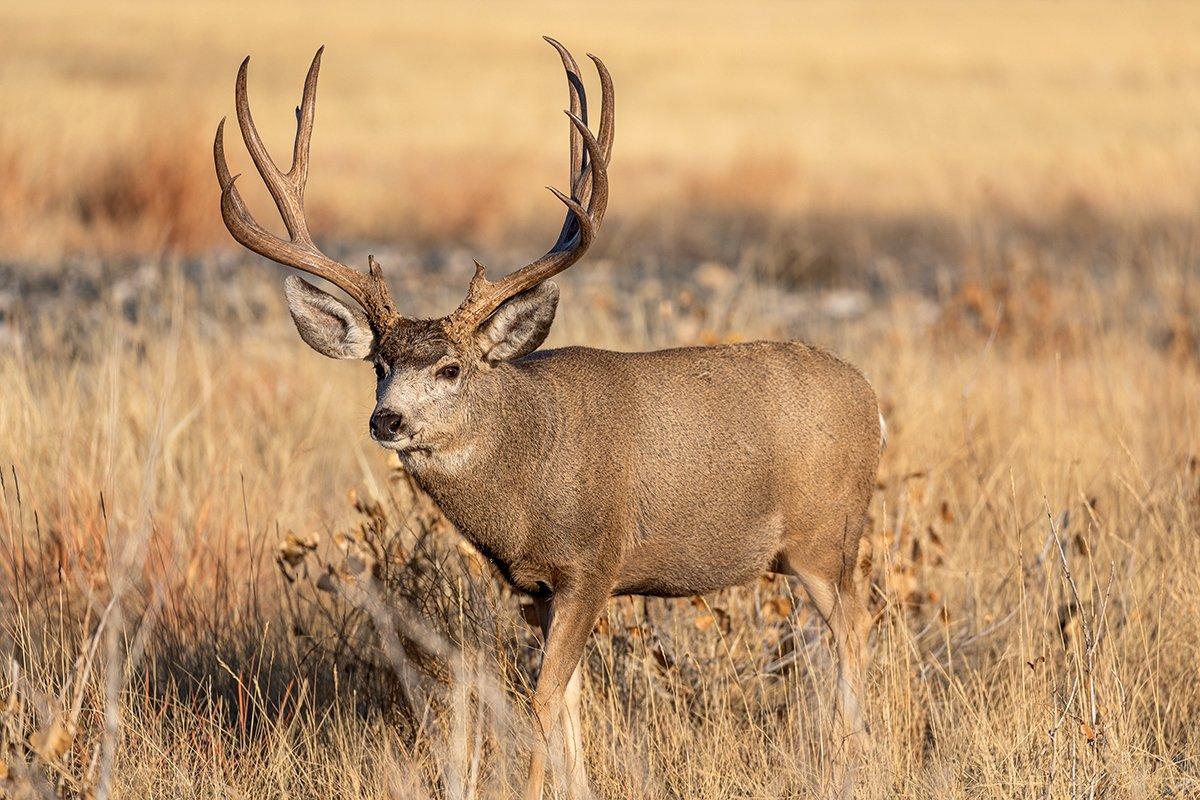One time I said muleys are dumb when compared with whitetails. I've regretted that line ever since
The first time I ever went mule deer hunting I shot a nice 4x4 buck with a bow from a ground blind at about 30 yards. He was feeding in a Colorado alfalfa field on a chilly September evening, and my buddy Miles Fedinec was in the blind with me. Miles is a Westie (the cowboy and camo type, not the flat-brim type), and he and I have been trading hunts for years.
After I killed that buck, I said something to the effect of Mule deer are kind of dumb compared to whitetails.
Miles replied, Yeah, a lot of Easterners are kind of dumb, too, believing things like that.
That was eight years ago, and I haven't killed another mule deer since. Last October, hunting in the same unit, I spent a week spotting and stalking mule deer with my bow. I was on bucks almost constantly, but I ultimately struck out. I lost a couple of favorite arrows and broadheads in the process too. Maybe some people are proficient at shooting from their knees at a spooky buck 65 yards away. Myself, I'm just not that good.
This year, I drew a muzzleloader tag, and I had all but cleared the freezer and wall space for the big buck I was sure that I'd kill. Colorado requires muzzleloader hunters to use open sights and loose powder, but still, I told everyone who'd listen that I planned to be pretty selective.
(Going mule deer hunting? By the end of it, you'll need a cold one. Realtree Beer Mugs / $30 for 4)
Once again, I should've kept my Eastern mouth shut. I passed on some young bucks early in the week that I would've paid good money to see on the last day. I hunted hard and looked at a lot of country. I covered a mix of private land, state land, and a whole bunch of BLM land. I was in deer constantly and stalked bucks every day. One evening, I shot at a good buck that I did not get. I spent the following morning drinking coffee and watching him through my spotting scope, browsing on a hillside 1,500 yards on the other side of a fence that I was not allowed to cross.
Mule deer can smell you, of course, but there are plenty of hills and coulees for gaming the wind in that country. These deer beat you — or at least beat me — with their ears and eyes.
The next day, I spotted a pair of nice bucks in a creek drainage on some BLM ground. They bedded on a little knoll, and I crawled to within 50 yards of them. I was proud of that stalk. When they stood, I settled my sights on the biggest one's shoulder and squeezed the trigger. My muzzleloader misfired. The sound was like the pop of a flaccid balloon that settled in the corner, three days after the party. The bucks stood there for a bit, long enough for me to fish out another primer, but bounced away just as I closed the breech and cocked the hammer.
In addition to that unfortunate business, I just scared the bejesus out of a bunch of bucks. Come to find out, mule deer are incredibly well adapted to predator evasion in the wide-open country that they inhabit. They may stand and stare at your pickup truck from 400 yards, without an apparent care in the world. But their demeanor changes altogether when you get within 200 yards of them and start crawling around on the ground.
Mule deer can smell you, of course, but there are plenty of hills and coulees for gaming the wind in that country. These deer beat you — or at least beat me — with their ears and eyes. The terrain they inhabit is monotonous and deceptive, with few landmarks to reference during a stalk and countless hidden ditches and valleys, all of which seem to hold herds of unseen bedded does that boil out like ground hornets. More than once, I blundered right into deer that I thought were still another ridge away — or belly-crawled to a peak, expecting a shot at any moment, to find no deer whatsoever on the other side. A mule deer's best trick is that it can simply vanish into the wide-open nothing, as if it had access to a secret network of underground tunnels.
There's a reason why serious mule deer hunters work in pairs, with one person spotting through optics and guiding the hunter in close with hand signals. I was hunting alone but maybe that was for the best, since I don't know that I could've dealt with the ridicule from an audience.
I came home without a buck, once again, and it'll take me a few years to draw that muzzleloader tag again. A ground blind over a nice alfalfa field sure would've made it easier. But I can hunt whitetails like that here at home. I've learned that real mule deer hunting means crawling around in the dirt and picking cactus out of your legs for days afterward. I'm not sure that I care to hunt one any other way.
I'll also go on record by saying I now call mule deer many things — iconic, addicting, maddening. But I'll never again call them dumb.
(Don't Miss: 8 Things to Know About Drought and Western Big Game Hunting)








